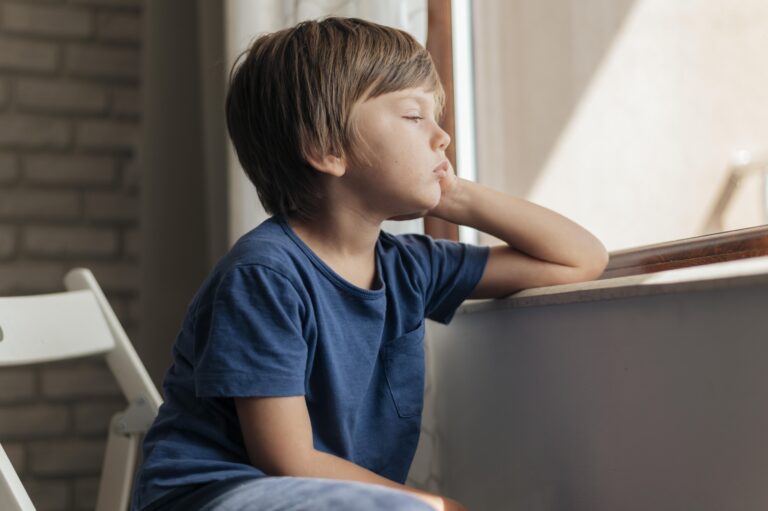In today’s digital world, Social Media is a big part of how young people connect, learn and express themselves. Platforms like TikTok, Instagram and Snapchat are used by children as young as 8, even though most have a minimum age restriction of 13. While Social Media can offer benefits—like creativity, connection and support—it also comes with risks, especially for developing minds.
Many parents, understandably, allow their children to engage with social media, from far younger than 13 years of age. At times, allowing children to access screens / social media, can feel more like a necessity than a choice, but even those who build the technology (and make a substantial living off it) recognise the need for boundaries. For instance, Bill Gates didn’t allow his children to have phones until they were 14 and banned phones at the dinner table. Steve Jobs famously said his children hadn’t used the iPad when it first launched and Susan Wojcicki (former YouTube CEO) has said she often takes away her children’s phones, especially during family time or vacations because she wants them to interact with one another.
This article reviews recent research and aims to provide parents with information to consider when determining the effects of Social Media use, as well as providing practical tips to assist in managing its use in children. The information is divided into relevant age groups.
Preschool-Aged Children (2-5 Years)
What we know:
Children in this age group are not developmentally ready for Social Media. Exposure to screens should be limited and supervised. Social Media content can be confusing or even frightening for young children, especially when unrestricted.
- Educational programming (like “Sesame Street”) can have positive effects on vocabulary, literacy and numeracy.
- Entertainment content or adult-targeted media can have negative effects, including reduced attention span and increased aggression.
- The social context of viewing matters: children learn more when adults watch with them and discuss the content.
- According to the Association of American Pediatrics, the recommendation is that for ages 2–5, limit screen use to 1 hour per day of high-quality programming.
- Encourage screen-free zones (e.g. bedrooms, mealtimes).
Ages 4-6: Early Childhood
What we know:
Children in this age group are not developmentally ready for Social Media. Exposure to screens should be limited and supervised. Social Media content can be confusing or even frightening for young children, especially when unrestricted. Digital and Social media can have a significant impact on the ability to develop focus and attention.
Recommendations:
- Avoid Social Media use entirely at this age.
- Focus on face-to-face play, storytelling and outdoor activities.
- If using screens, choose age-appropriate, educational content and co-view with your child.
- Begin teaching basic digital habits, like asking permission before using a device.
- Encourage screen-free zones (e.g. bedrooms, mealtimes)
- Click here to explore ideas for great ways to engage your young children:
https://www.cynicalparent.com/fun-summer-activities-for-kids/
https://www.kingascorner.com/screen-free-activities-for-kids/
Ages 7-11: Primary Years
What we know:
Many children begin exploring online games and video-sharing platforms like YouTube. Around 40% of children aged 8–12 use Social Media, despite age restrictions. Children are highly impressionable and may struggle to tell the difference between real and fake content. Children under 13 are not emotionally or cognitively equipped to handle the risks of Social Media, such as exposure to harmful content, online bullying and addictive design features. The American Psychological Association notes that children’s brains between ages 10–12 become highly sensitive to social rewards—likes, comments and shares—which can make them particularly vulnerable to addictive behaviours and emotional dependency on online feedback. Platforms often include data tracking, targeted advertising and public sharing, which can compromise children’s privacy and safety. UNICEF highlights that age-based restrictions are meant to protect children from sexual victimisation, mental health impacts and exposure to inappropriate content, though enforcement is inconsistent.
Recommendations:
- Delay access to Social Media as long as possible. There is evidence of the impact of social media engagement and reduced focus and attention.
- Use parental controls and privacy settings.
- Talk regularly about online safety, kindness, and what to do if they see something upsetting.
- Develop critical thinking in your children, and help them to understand that much of online content is orchestrated in a way that presents real life through unseen filters and scripts, often setting unrealistic standards.
- Encourage offline friendships and hobbies.
- Teach them to pause and reflect before posting or responding online. If they feel uncomfortable to make a specific comment face-to-face, they should not be making it online. Cyberbullying is a real concern for most parents and students.
- Maintain healthy screen habits yourself.
Ages 12-14: Early Adolescence
What we know:
This is a sensitive time for brain development, especially around social feedback and peer approval. Teens are more likely to compare themselves to others online, which can affect self-esteem. Social Media can both support and harm mental health, depending on how it’s used. The positive outcomes of moderate and monitored use include: encouraging early initiation of mental health support, affirming identities, providing social support and buffering against stress.
Recommendations:
- Help your child set boundaries (e.g. no phones at night or during meals).
- Encourage them to curate their feed—follow positive, inspiring accounts and unfollow those that make them feel bad.
- Talk openly about mental health, body image and peer pressure.
- Teach them to pause and reflect before posting or responding online. If they feel uncomfortable to make a specific comment face-to-face, they should not be making it online. Cyberbullying can affect anyone using Social Media platforms.
- Use this time to build trust and communication, not just control.
Ages 15-18: Older Teens
What we know:
Teens use Social Media to explore identity, connect with peers and express themselves. They are more capable of critical thinking but still vulnerable to online risks like cyberbullying, misinformation and addictive design features. Likes and follower counts can strongly influence behaviour and self-worth.
Recommendations:
- Support your teen in developing a healthy digital identity.
- Checklist for creating a healthy digital identity.
- Discuss digital footprints and how online actions can affect future opportunities.
- Encourage media literacy—help them question what they see and understand how algorithms work.
- Promote balance: social media should not replace sleep, schoolwork, or in-person relationships.
- Be a safe space for them to talk about their online experiences.
In conclusion:
Social Media is not all good or all bad—it’s a tool. The key is helping children and teens use it in ways that support their growth, not harm it. By staying involved, setting clear expectations and boundaries, and keeping communication open, parents can guide their children to become thoughtful, responsible digital citizens.
If you ever feel unsure or concerned, don’t
hesitate to reach out to your school’s Counselling Team. We’re here to support
you and your child every step of the way.
Ms Nefeli Sfetsios, School Counsellor



